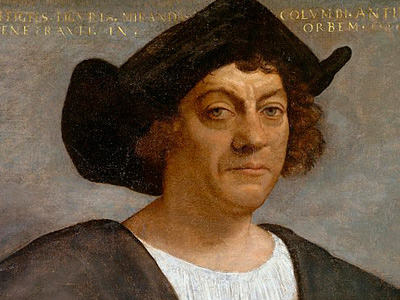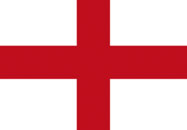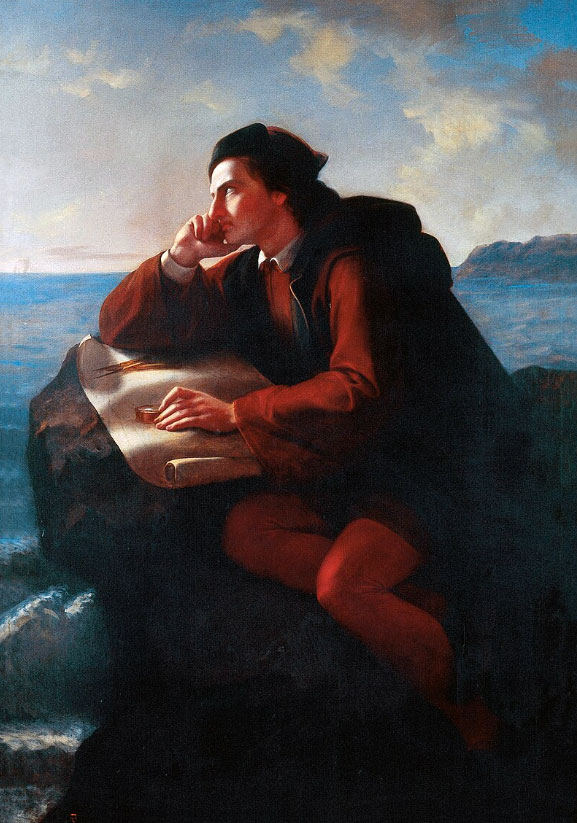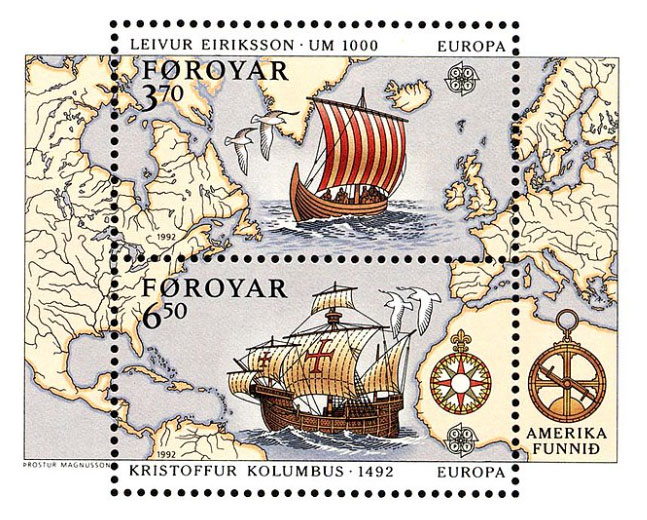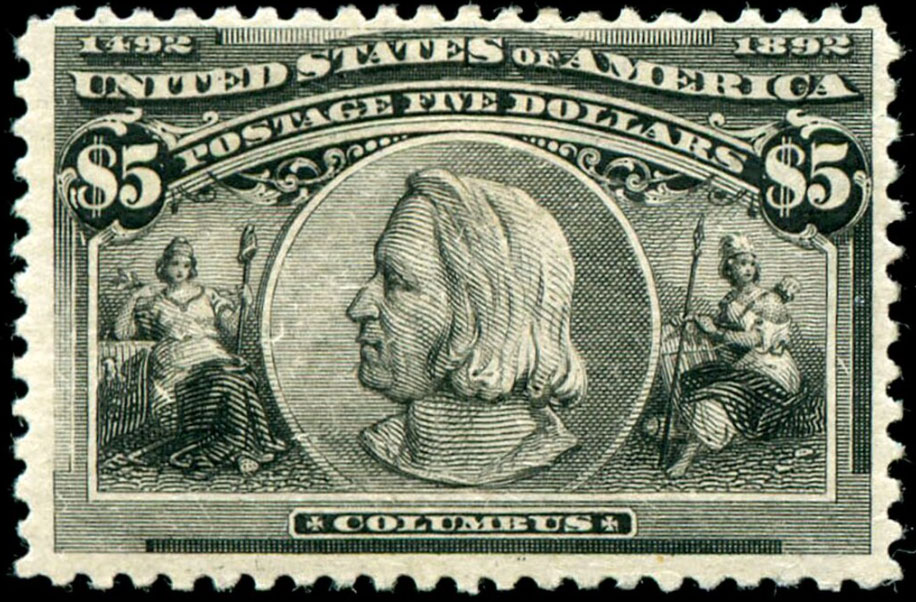Christopher Columbus (1451-1506)
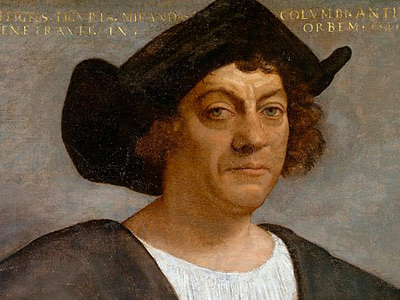
Illness and Death
During a violent storm on his first return voyage, Columbus, then 41, suffered an attack of what was believed at the time to be gout. In subsequent years, he was plagued with what was thought to be influenza and other fevers, bleeding from the eyes, and prolonged attacks of gout. The suspected attacks increased in duration and severity, sometimes leaving Columbus bedridden for months at a time, and culminated in his death 14 years later.
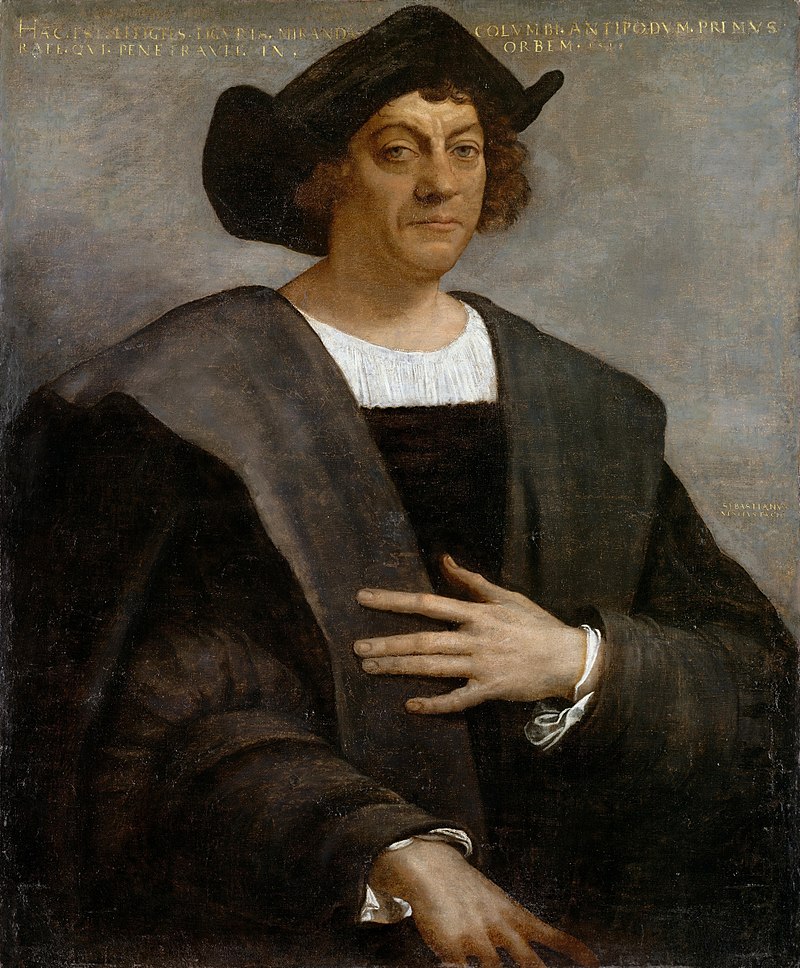
Posthumous portrait of Christopher Columbus by Sebastiano del Piombo, 1519. There are no known authentic portraits of Columbus
On 20 May 1506, aged probably 54, Columbus died in Valladolid, Spain. His remains were first interred at Valladolid, then at the monastery of La Cartuja in Seville (southern Spain) by the will of his son Diego Colón, who had been governor of Hispaniola. In 1542, the remains were transferred to Colonial Santo Domingo, in the present-day Dominican Republic. In 1795, when France took over the entire island of Hispaniola, Columbus's remains were moved to Havana, Cuba. After Cuba became independent following the Spanish–American War in 1898, the remains were moved back to Spain, to the Cathedral of Seville, where they were placed on an elaborate catafalque.
However, a lead box bearing an inscription identifying "Don Christopher Columbus" and containing bone fragments and a bullet was discovered at Santo Domingo in 1877. To lay to rest claims that the wrong relics had been moved to Havana and that Columbus's remains had been left buried in the cathedral at Santo Domingo, DNA samples of the corpse resting in Seville were taken in June 2003 (History Today August 2003) as well as other DNA samples from the remains of his brother Diego and younger son Fernando Colón. Initial observations suggested that the bones did not appear to belong to somebody with the physique or age at death associated with Columbus. DNA extraction proved difficult; only short fragments of mitochondrial DNA could be isolated. The mitochondrial DNA fragments matched corresponding DNA from Columbus's brother, giving support that both individuals had shared the same mother.
Such evidence, together with anthropologic and historic analyses, led the researchers to conclude that the remains found in Seville belonged to Christopher Columbus. The authorities in Santo Domingo have never allowed the remains there to be exhumed, so it is unknown if any of those remains could be from Columbus's body as well. The Dominican remains are located in "The Columbus Lighthouse" (Faro a Colón), in Santo Domingo.
HISTORY
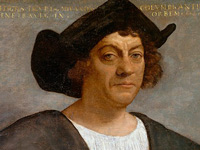
RESOURCES
This article uses material from the Wikipedia article "Christopher Columbus (1451-1506)", which is released under the Creative Commons Attribution-Share-Alike License 3.0.
© Stories Preschool. All Rights Reserved.
